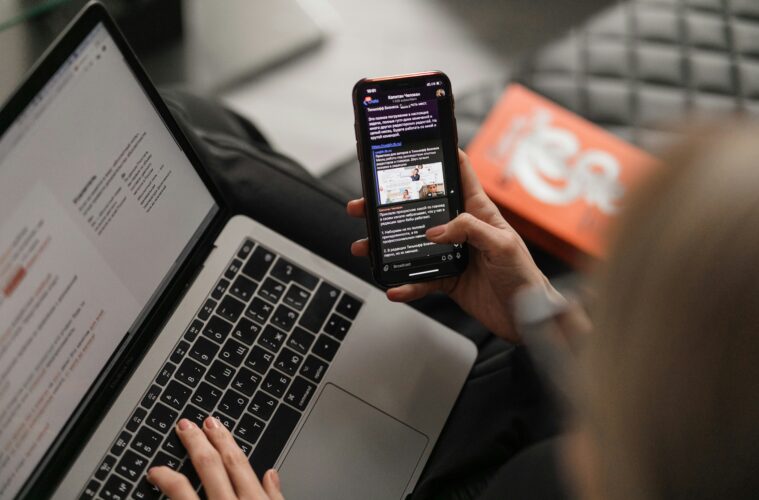In our hyper-connected era, the line between digital convenience and overload is thinning. Have you ever felt overwhelmed by ceaseless notifications, emails, and calls? If yes, you’re not alone in this digital whirlwind. This article dives into effective strategies for maintaining a balanced lifestyle amidst our tech-saturated environment, emphasizing the importance of setting tech boundaries. We’ll explore actionable steps and tools, including subtle uses of reverse phone lookup, to safeguard your peace and privacy.
Understanding the Need for Digital Boundaries
Why draw lines in our digital interactions? As our days increasingly blur into a mosaic of screen time, distinguishing between productive use and digital distraction becomes critical. Boundaries prevent burnout and promote mental wellness. But where do you start?
Recognizing Digital Overload
Identify signs of digital fatigue: irritability, lack of focus, and a dip in physical activity. Recognizing these symptoms can prompt you to reassess your digital habits and push for a change. Are you checking your phone the first thing in the morning and last at night? If so, it’s time to rethink. Additionally, consider emotional reactions to digital content. Does the news cycle on your feed make you anxious? Does social media leave you feeling envious or dissatisfied? These emotional responses are also indicators that it’s time to set digital boundaries.
Setting Clear Tech Limits
Establish tech-free zones in your home, like the bedroom or dining room, to foster healthier interactions with technology. Enforcing specific times when you engage with digital devices can also curb the compulsion to remain ‘online’ incessantly. Extend these practices to your family or roommates to support a collective effort in minimizing digital intrusion into personal space and time. You might also experiment with “tech curfews,” limiting device usage after a certain hour in the evening to enhance your nighttime routine and sleep quality.
Practical Tools for Managing Digital Overload
Implementing tools and apps can effectively reduce unwanted digital interactions. Here’s how you can leverage technology to create a quieter, more focused environment.
Utilizing Apps for Focus
Apps that limit your screen time or block distracting sites during work hours can enhance productivity. For instance, consider tools that allow for scheduled silences of your social media notifications. Some apps can also provide insights into your most used apps and websites, offering detailed reports that help you understand your digital habits better. This insight allows you to make informed decisions about where to set limits or which apps to avoid during work or family time.
Leveraging Reverse Phone Lookup
An invaluable tool in managing digital communications is reverse phone lookup. This tool helps you identify unknown numbers, filtering out potential spam or irrelevant calls, thus maintaining your focus and privacy. Isn’t it better to know who’s calling before you decide to pick up? Additionally, integrating this feature into your phone’s call management system can automatically screen incoming calls, providing a real-time decision-making aid to either accept, ignore, or block calls based on reliable data. This not only secures your time from interruptions but also enhances your control over digital communications, aligning with your broader goals of digital detoxification.
Creating a Personalized Digital Detox Plan
Each person’s digital detox might look different, based on lifestyle and personal goals. Creating a plan tailored to your needs can make digital detoxing not only manageable but also enjoyable. Consider your daily routine, the demands of your job, and your personal life when shaping this plan. It’s about creating a strategy that reduces digital strain without compromising your responsibilities and connections.
Assess Your Digital Habits
Begin by tracking how much time you spend on various devices and apps. This awareness is the first step towards meaningful change. What apps consume most of your time? Are they enhancing your life or just filling it? Tools like digital wellbeing features on many smartphones or third-party apps can provide detailed statistics on your screen time distribution. Analyze which apps you use passively, and question whether these moments could be replaced with more fulfilling activities. It’s also helpful to note the times of day when your usage peaks—could these be opportunities for introducing a digital break?
Build a Routine that Embraces Offline Activities
Incorporate activities that don’t require a digital device. Whether it’s reading a book, taking a walk, or practicing mindfulness exercises, find what rejuvenates you without a screen. This balance is crucial for mental and emotional health. Explore hobbies that engage your hands and mind—like gardening, cooking, or crafting—which can provide a satisfying break from the digital world. Plan these activities during times you’re most likely to succumb to digital overload, creating a healthy habit loop that replaces screen time with enriching offline experiences.
Conclusion
Embarking on a digital detox is less about renouncing technology and more about using it wisely to enhance your life. Tools like reverse phone lookup play a small yet significant role in this journey by screening out unnecessary digital noise, allowing more space for meaningful interaction and personal well-being. As you consider your relationship with technology, ask yourself: How can I use technology as a tool to enhance my life rather than detract from it? A thoughtful approach to digital consumption can lead to a more balanced, fulfilling life.
Published by HOLR Magazine.


